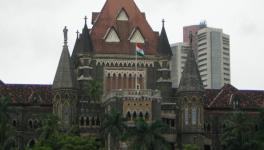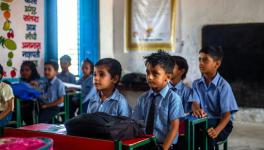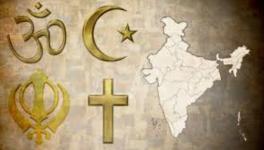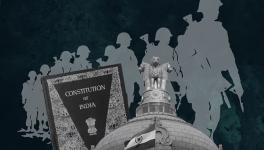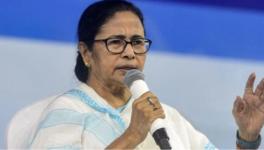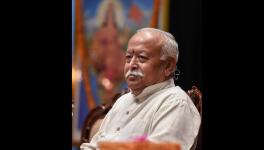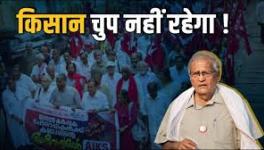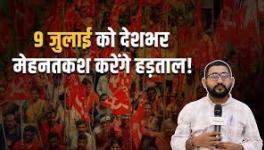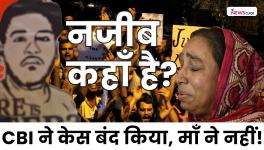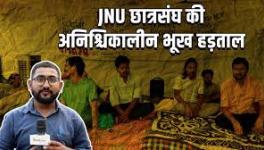Why a 3-Year-Old Child’s Death Will Haunt us For a Long Time
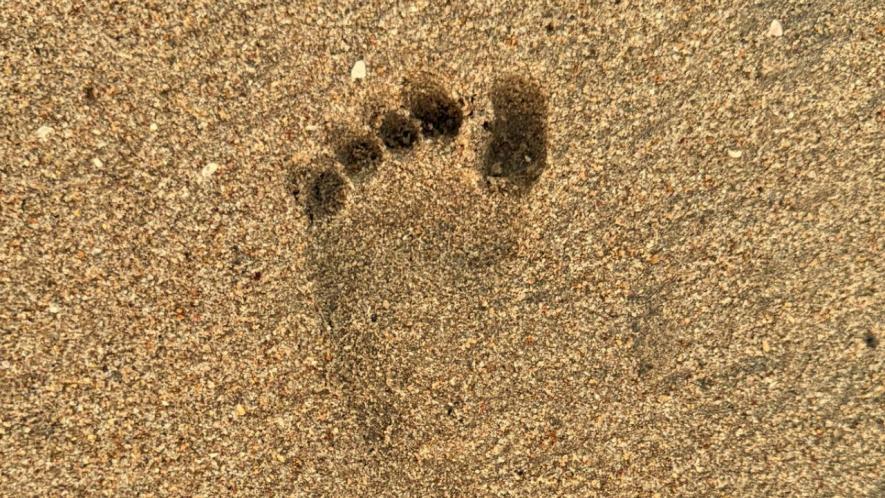
Representational Image. Image credit: Newsclick
Men never do evil so completely and cheerfully as when they do it from religious conviction.
Blaise Pascal (1623–1662)
French mathematician, physicist, inventor, philosopher, and Catholic writer
Namrata (name changed), the three-year-old daughter of IT professionals from Indore, is dead.
She had brain tumour which was successfully operated upon in January in Mumbai but it relapsed in March, and within less than a week, she breathed her last.
Apropos nothing seems amiss in her story.
The child got the best treatment available, and for her parents, belonging to Jain community, money was never a problem.
Despite all these relevant details, it is rather difficult to forget or disremember the past few hours of her life when she was still alive, when she must have been in tremendous pain and the way she was made to undergo some ritual to 'improve her next birth' -- as impressed upon her parents by their spiritual leader.
We learnt that instead of hospital bed, where she should have been given palliative care, the child was shifted to the ashram of one Maharaj, a Jain monk, who had convinced his gullible disciples - her parents - to opt for Santhara “to decrease her suffering and improve her next birth”.
And these young IT professionals, barely in their 30s, had no qualms in shifting their dying daughter to the ashram, despite knowing full well that she was in tremendous pain and any sudden change would exacerbate her death.
Santhara or Sallekhana, as is common knowledge, is a Jain practice where a person voluntarily gives up food and water with the intention of dying. According to rough estimates, every year around 200 people thus opt for Sallekhana.
Looking at the fact that this practice is akin to suicide, it had been declared illegal by the Rajasthan High Court, which had declared it is an offence under Article 309 that deals with 'attempts at suicide', and had said that it cannot be considered part of essential practice of religion and thus cannot be protected under Article 25. The Supreme Court has stayed this decision of the High Court but it would be incorrect to say that the last word on this tradition of self-harm has been spoken.
As of now, one can keep aside any disagreement about this custom, but one can at least agree that only an adult can make a decision, whether to opt for death voluntarily. If our Constitution does not allow an adolescent to vote or even to be issued driving licence, how can it be expected that s/he will be in a position to choose death over life. And for a child, barely 3 years’ old, it would be impossible to decide on her own and if at all s/he is subjected to this practice, it can only be construed that it has been forced on her.
Reports further tell us that within four hours of the start of the Sallekhana ritual, Namrata was dead.
Shockingly, it took more than one-and-half months for the news to reach public domain, and that, too, after the Golden Book of World Records, a US-based organisation, acknowledged that Namrata was the youngest person to “vow the religious ritual Santhara.”
Namrata's painful death raises many questions:
- How the weird religious convictions of her rather learned parents compelled her to undergo torture of a kind during her last hours when she was in deep pain.
- How during those crucial moments when the child needed extra care - may be some injections to reduce her pain and company of her intimate ones -- she was shifted to an unknown place among equally unknown people, who subjected her to a ritual that must have aggravated her pain.
- All this torture was reportedly executed basically to 'improve her next birth' and make her the “youngest person to vow Santhara”.
You try to put it any way, the spiritual guru, in cahoots with her parents because of their convictions, not only exacerbated the child’s pain but also expedited her death.
Our Constitution well recognises the sanctity of human life and there are inalienable rights possessed by every individual that cannot be taken away unless law itself mandates it. How then can her parents and their spiritual guru be not prosecuted for their violation of this basic precepts?
Does not justice demand that legal aspects of the whole matter are looked into with urgency and commensurate legal action be initiated against all three of them? Is not it time that the Child Rights Commission steps in and impress upon the police to invoke stringent charges against the individuals involved in expediting the child's death.
Is not it time that our law enforcement agencies are able to send a strong message to all such violators of law who, under the garb of faith and religious rights, engage in many such acts that basically violate the sanctity of human life and thus violate the values and principles of our Constitution.
It needs to be kept in mind that when glorification of such (forced) sacrifices is not questioned and challenged then it further encourage people to take similar steps.
Could it be said that Namrata's parents were 'inspired' to undertake this ritual listening to the glorification of a similar 'Santhara' death in their community of a 13-year-old girl from Secunderabad, and no action being taken against any intimate relatives witness to it?
The fact is that Namrata's sudden death because of religious convictions of her parents is not an isolated case.
A few years ago, we witnessed death of a 13-year-old girl belonging to another very rich Jain family, which ran a jewellery business, in a similar 'Santhara death'.
The only difference was that this girl was 13 years old, who studied in 8th standard and legally she was no adult and, therefore, not in a position to vote or marry on her own and, therefore, was dependent on her parents for her welfare.
For any sane and sensitive person, it would appear incomprehensible that she undertook a fast that continued for more than two months - 68 days to be exact - and she died within two days of ending her fast because of cardiac arrest.
What must have prompted her to undertake the fast for such a long period?
Psychologists had debated the case then in detail and had underlined how the indirect pressure exerted by parents can effectively make a child psychologically weak or vulnerable. When religion gets mixed up with it, then a sense of guilt also gets associated with it, which tells them that if they do not do such and such thing, the family will face difficulties. It starts believing that whatever the child is doing, is for the betterment of the family itself, and it basically needs to sacrifice her health a bit.
There is no denying the fact that parents, and even other intimate ones, should have impressed upon her to focus on her studies and not go for such activities. But that must not have happened. In fact, the ambience in the house would have been such that such acts must have received encouragement in the family itself.
Looking back, the way the child's fast was advertised then, how people from the community and even political leaders visited her when the fast was going, is mind boggling. She was admitted to hospital two days after completing her fast, where she died of cardiac arrest. It seems unbelievable that at least 600 people attended Aradhana's funeral, hailing her as a 'bal tapasvi'. The funeral procession was called a 'shobha yatra', a mark of celebration.
The whole episode of glorifying the fast and later her death infuriated child rights activists who had even filed a case against her parents. An FIR was duly registered against her parents under Section 304 (2) of the Indian Penal Code (Culpable homicide not amounting to murder), besides Section 75 Juvenile Justice Act.
What one learns that the police decided to close the case within five months 'for lack of evidence', prompting a severe reaction from child rights activists who claimed that the police itself diluted the case in league with the community elders and 'closed it without proper investigation.'
The death of Namrata, forced upon her by her parents and their spiritual leader, preceded by death of Aradhana, cannot be seen in isolation.
Not only pre-Independence India, but post-Independence India is witness to many such anti-human practices prevalent in every religion present here. In fact, the need of the hour is to raise voices against all such anti-human practices that glorify denial of human dignity.
It is time we declare or make a resolve that practices like Made Snana or even glorifying and 'dedicating' young daughters to live the rest of their lives formally as 'god's companion' but are condemned to live a life of sexual slavery -- Devdasi etc. etc., become part of history. And there is finally no truck with reactionary elements of any kind, faith or dispensation.
Perhaps that is the best way to remember Namrata, the three-year-old deceased child.
The writer is a veteran independent journalist. The views are personal.
Get the latest reports & analysis with people's perspective on Protests, movements & deep analytical videos, discussions of the current affairs in your Telegram app. Subscribe to NewsClick's Telegram channel & get Real-Time updates on stories, as they get published on our website.









